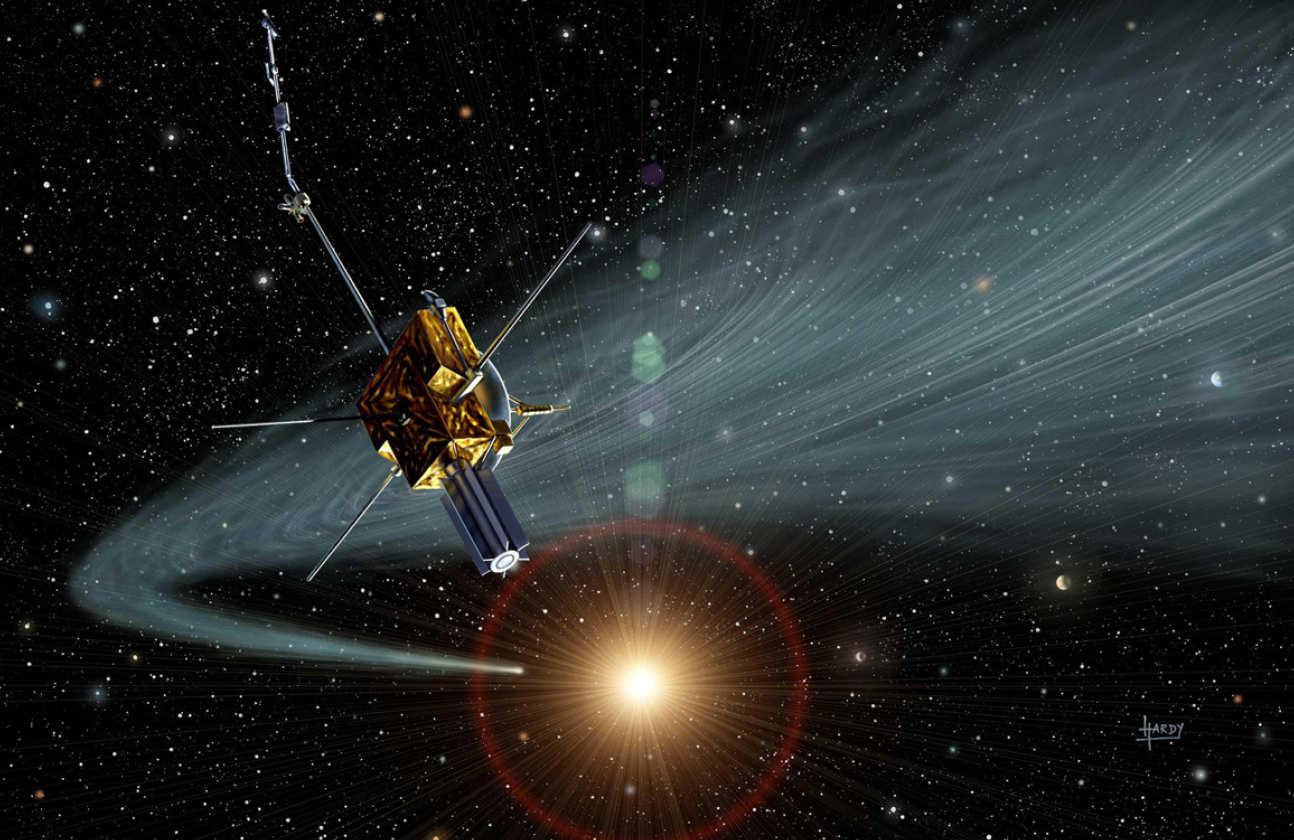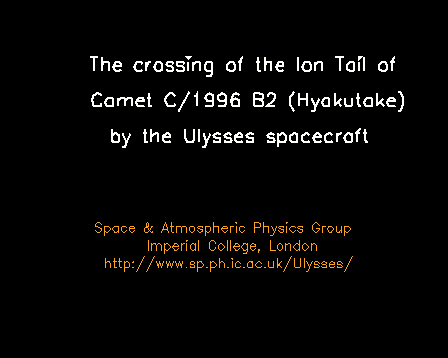Ulysses's Hyakutake Encounter
How was the tail crossing found?
 In 1998, Pete Riley (then of the Los Alamos National Laboratory) and colleagues reported their discovery of a very strange event in the data returned from the SWOOPS instrument aboard Ulysses. They had found that on May 1, 1996, the number of protons seen at Ulysses dropped dramatically for several hours. This was rather puzzling to say the least. Other instruments aboard the spacecraft had also detected the event at Ulysses.
In 1998, Pete Riley (then of the Los Alamos National Laboratory) and colleagues reported their discovery of a very strange event in the data returned from the SWOOPS instrument aboard Ulysses. They had found that on May 1, 1996, the number of protons seen at Ulysses dropped dramatically for several hours. This was rather puzzling to say the least. Other instruments aboard the spacecraft had also detected the event at Ulysses.
One of those instruments was the magnetometer, which measures the strength and direction of the magnetic field of the solar wind as it is carried away from the Sun past the spacecraft. Looking at the magnetometer data from May 1, Imperial College and Queen Mary and Westfield College scientists noticed that they seemed reminiscent of a 'wake', and were broadly symmetrical. Further analysis revealed that the magnetic field direction remained broadly constant for several minutes at a time during this period. Looking at the event as a whole, they came to the conclusion that the field lines were hairpin-shaped. This is exactly what is expected in comets' ion tails.
Working independently of the magnetometer team, the Ulysses SWICS team, led by Prof. George Gloeckler of the University of Maryland discovered signatures of cometary ions in the data returned from their instrument.
Ulysses's Hyakutake Encounter
- How was the comet identified?
- An Animation of the Tail
- What has the tail crossing told us?
- What next for cometary missions?
 In the animation, we see the development of the ion tail of Comet Hyakutake, from several weeks before, to a littleafter its perihelion (the point where it is closest to the Sun).
In the animation, we see the development of the ion tail of Comet Hyakutake, from several weeks before, to a littleafter its perihelion (the point where it is closest to the Sun).